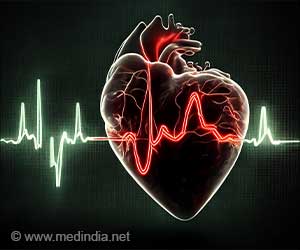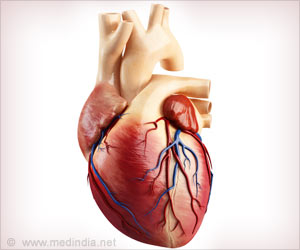When a person suffers cardiac arrest, it is best for the bystander to start chest compressing. Gasping by the patient shouldn’t be mistaken as breathing, cardiologists suggest.
When a person suffers cardiac arrest, it is best for the bystander to start chest compression right away. Gasping by the patient shouldn’t be misaken as breathing, cardiologists suggest.
Dr. Gordon Ewy, chief of cardiology at the University of Arizona Sarver Heart Center, and his colleagues reported in Monday's online issue of the journal Circulation that in more than half of witnessed cardiac arrest cases, the patient gasped.Bystanders often misinterpreted gasps or other unusual vocal sounds as normal breathing when it wasn't, the researchers said.
"Gasping is an indication that the brain is still alive, and it tells you that if you start and continue uninterrupted chest compressions, the person has a high chance of surviving," said Ewy.
"We need people to promptly recognize sudden cardiac arrest, to call 911 and to start chest compressions right away."
The researchers said they hoped their findings would lead more untrained bystanders to do chest compressions for cardiac arrest, which causes someone to pass out and collapse to the ground within seconds.
Gasping may also be described as:
Advertisement
Gurgling
Advertisement
Snorting
Laboured breathing
Distinguishing between normal breathing and gasping may be challenge for bystanders, said Dr. Andrew Travers, a spokesman for the Heart and Stroke Foundation of Canada and an emergency physician in Halifax.
"Breathing is a rhythmic rise of the chest," Travers said in an interview. "You can look, you can listen, you can feel air moving if you get down close to the patient. And gasping is the exact opposite. It's not symmetrical, it's not regular, it's not rhythmic."
Many bystanders hesitate to perform mouth-to-mouth ventilation. But when someone sees or hears a victim collapse, rescue breathing is not needed and may be harmful, Ewy said.
"When the patient gasps, there is a negative pressure in the chest, which not only sucks air into the lungs, but also draws blood back to the heart. In contrast, mouth-to-mouth breathing creates overpressure in the chest and actually inhibits blood flow back to the heart. Gasping during cardiac arrest is much better than mouth-to-mouth breathing."
Gasping during CPR indicates the rescuer is doing a good job, Ewy added.
The Heart and Stroke Foundation of Canada also recommends that those who witness an adult suddenly collapse and are unsure of their ability to perform cardiopulmonary resuscitation or CPR to:
Call the local emergency number to contact emergency responders.
Perform hands-only compressions, pushing down hard and fast on the centre of the chest at a rate of 100 compressions per minute without using mouth-to-mouth.
Since using chest compressions plus giving breaths is the best known way to increase a person's chance of survival, the group recommends that all Canadians learn CPR — a first-aid procedure to restore blood flow to someone suffering cardiac arrest.
Canadian and U.S. experts also continue to promote a combination of rescue breathing and chest compressions for victims of cardiac arrest due to non-cardiac causes, like near drowning or electrocution, and all victims of pediatric cardiac arrest.
Every year, about 35,000 to 45,000 Canadians suffer cardiac arrest, according to the foundation, CBC reported.
Source-Medindia
GPL/SK












